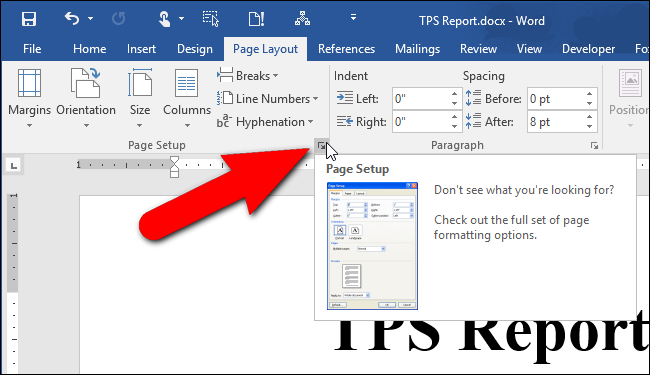On this page:
- Column headings
Overview
In Microsoft Word, it is important to make sure all tables are accessible to those using screen readers. This helps those using screen readers to make sense of the data contained in a table. You should only use a table when it's necessary to convey relationships between pieces of data, and not for layout purposes. When using tables in a Word document, keep them as simple as possible. If necessary, split complex tables into multiple smaller tables. Be sure to designate a header row and use column headings to help describe the data in the table, as well as repeat the column headings on each page the table appears on. You should also ensure the table has alternative text, to describe the contents of the table for those using screen readers.
Designate a header row
There are multiple parts to the process of making a table accessible. The first involves making sure the table has a header row designated. The 'Table Style Options' section of the ribbon on the Table Tools contextual tab lets you indicate that your data has a header row.
Returns or sets the vertical alignment of text in one or more cells of a table. Read/write WdCellVerticalAlignment. Expression Required. A variable that represents a 'Cell' object. This example creates a 3x3 table in a new document and assigns a sequential cell number to each cell in the table. Again, vertical alignment on the page is a Section formatting property, not a paragraph formatting property like horizontal alignment. Justification of Text in Tables in Microsoft Word. See Using Tables for Organizing and Formatting in Microsoft Word. Alignment to Page Margins or Left and Right Indents Rather Than Tab Settings Using Alignment Tabs.
To add a table with a header row to a Word document:

Free Word For Mac 2011

Vertical Alignment Table Word For Mac 2011 Fastrak Free
- On the ribbon, click Insert, and then click Table.
- Choose how many rows and columns you want for your table.
- On the ribbon, in the 'Table Tools' group, click Design.
- In the 'Table Style Options' group, make sure Header Row is checked.
Column headings
Column headings help describe the content in a table, and should be present to help users understand the content.
To add column headings to a table in Word:
- Place your cursor in the first cell of the top row of the table.
- Type the name for the first column, and press Tab to move to the next column.
- Repeat step 2 for the remaining columns.
Repeat column headings
Vertical Alignment Table Word For Mac 2011 Fastrak 2017
Column headings should be repeated at the top of a table if the table spans multiple pages.
To repeat the column headings:

- Right-click the table, and then click Table Properties.
- In the 'Table Properties' dialog box, click the Row tab.
- In the 'Options' group, make sure Repeat as header row at the top of each page is checked.
- Uncheck the box next to Allow row to break across pages.
- Click OK to accept the changes.
Alternative text

To add alternative text for tables, use the Alt Text tab of the 'Table Properties' dialog box:
- Right-click the table, and then click Table Properties.
- In the 'Table Properties' dialog box, click the Alt Text tab.
- Fill in the description for the table and, if necessary, add a title for the table.
- Click OK to accept the changes.
Prior versions of Word
Word For Mac
For instructions for creating an accessible table in Word 2013, see the section on tables in WebAim's Microsoft Word 2013 accessible documents guide.
